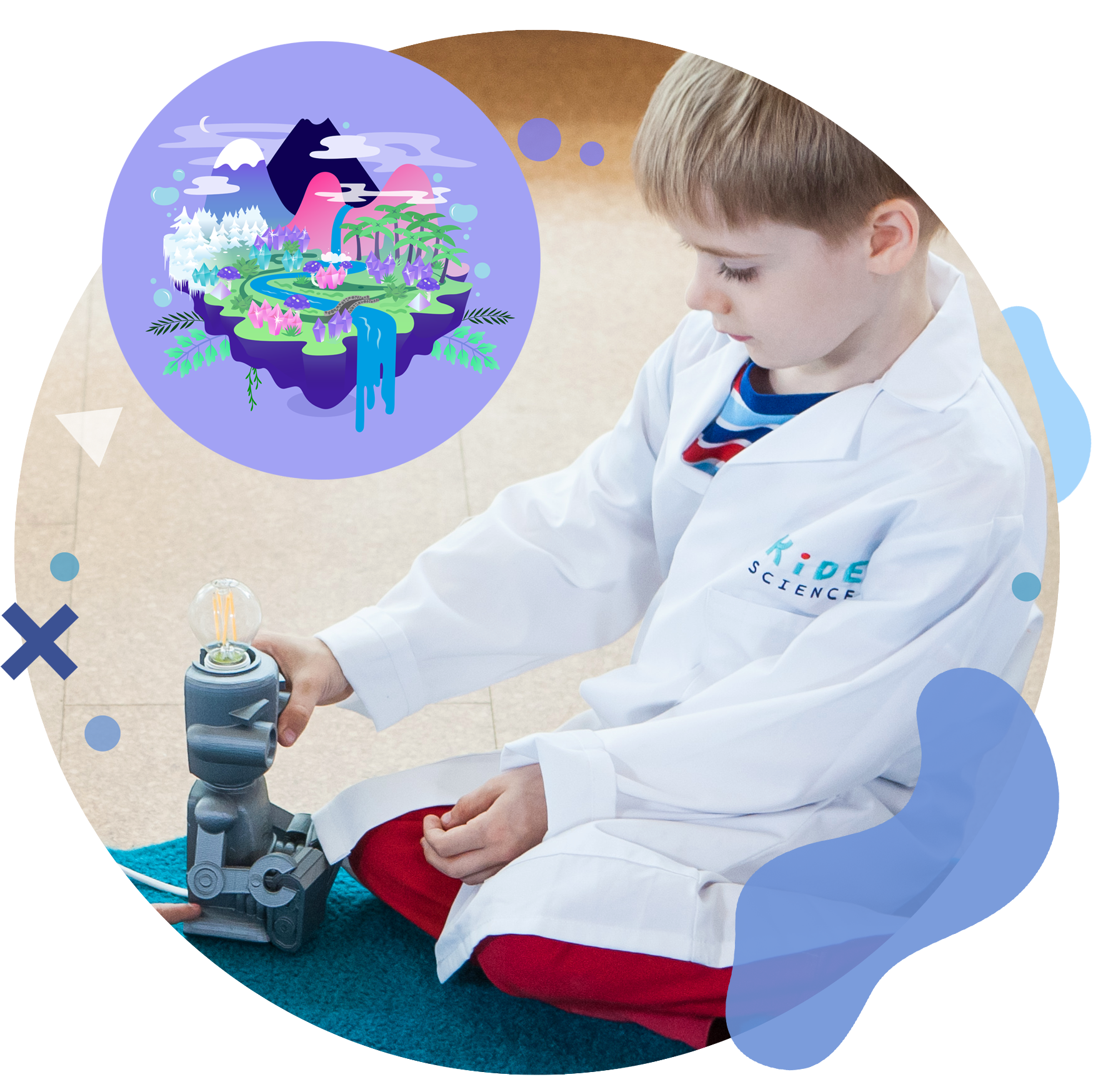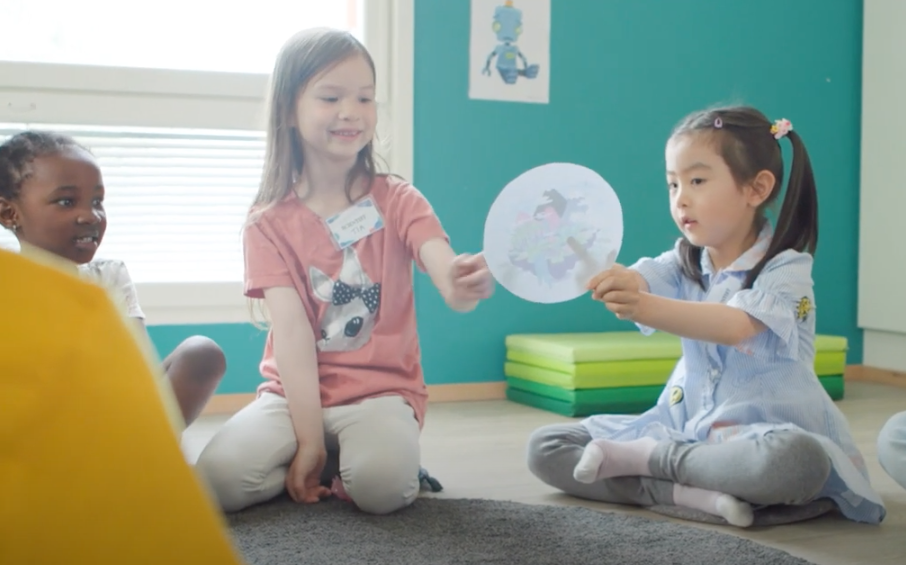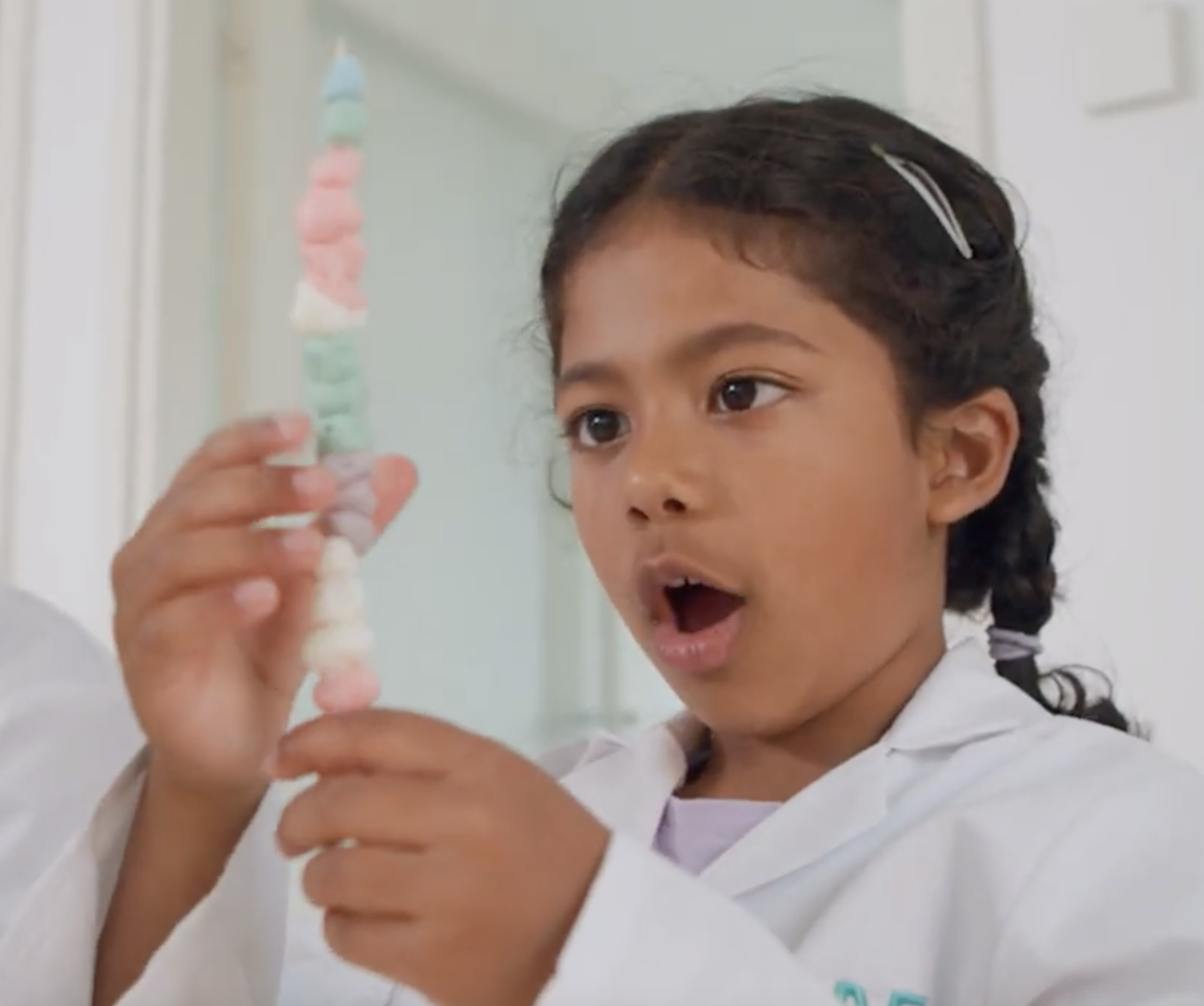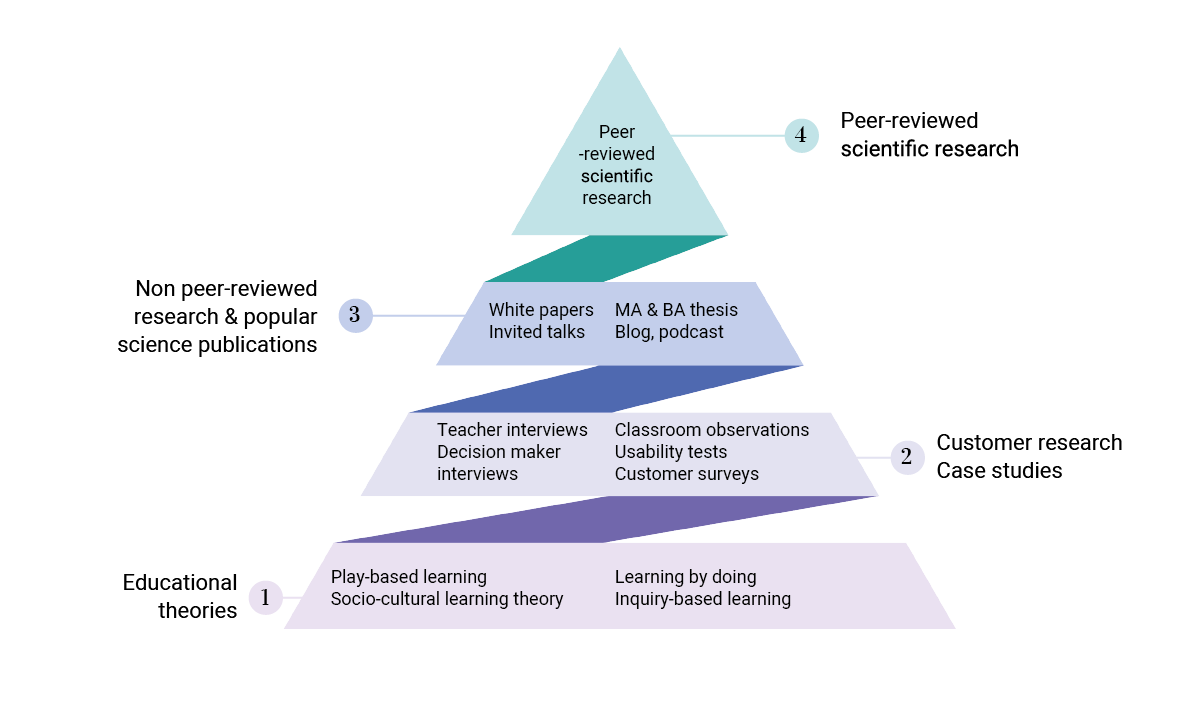In case you’ve never heard of it, or if you need a quick recap, the 5E instructional model (Bybee & Landes, 1990) is a teaching framework that guides children through a scientific process.
The model starts with engaging children's curiosity before they explore scientific concepts hands-on. Next, children explain their findings, elaborate on their understanding, and finally, evaluate their learning. It's a powerful, systematic way to support meaningful inquiries with kids.
But for followers of Kide Science, don’t all of these steps sound familiar? In our lessons, children are inspired by a research problem, (engage) test things out practically, (explore) explain their findings, elaborate, and then given opportunities to evaluate their learning.
So what's the difference?
Well…. Kide Science also guides students through an inquiry process, but we especially support mini scientists: children aged 3-8. We include essential strategies for young (and VERY excitable) brains.
Based upon research from the University of Helsinki in Finland, Kide Science utilizes the features of play, storytelling, and imagination: all dimensions critical to early science process skills development. Through our lessons, early childhood teachers can engage the youngest children, develop their inquiry skills, and truly make them believe in their ability to become investigators.
Here’s how, in practice, Kide Science's playful inquiry complements each of the 5E model stages:
- Engage: Kide Science uses captivating story letters sent from our story characters. This sparks curiosity and emotionally connects children to scientific concepts through their imagination. The stage for the learning journey is set, mirroring the "engage" section of the 5E model.
- Explore: The heart of Kide Science lies in play. Children engage in open-ended, child-led activities, exploring solutions to problems presented in the story while role-playing they are scientists! This hands-on approach perfectly aligns with the "explore" stage, where students have the opportunity to experiment and discover.
- Explain: In Kide Science lessons, teachers facilitate discussions, helping children articulate their discoveries and findings. Done through role play, the teacher addresses children as ‘scientists,’ and joins them in the imaginary world where anything is possible. This motivates young children to communicate their learning and think critically, in a safer and more exciting environment, mirroring the 5E models’ “explain” stage.
- Elaborate: After the initial exploration, playtime continues! Children can freely explore the scientific phenomenon further, solidifying their understanding. This play allows them to experiment, ask questions, and deepen their knowledge.
- Evaluate: During closing circle time, and still in character as young scientists, children discuss their learning with the story characters. This continual imaginative play gives meaning to their observations and helps solve the problem in the story. The learning is purposeful! Children connect new knowledge with their existing understanding by actively engaging with the narrative, reinforcing the learning process.
By using this playful inquiry approach, Kide Science provides a rich and engaging learning experience for young children. It helps them develop essential science process skills, foster a love of learning, and prepare them for future scientific endeavors: all at a much more developmentally-appropriate level.
You can find a leaflet explaining how well Kide matches the 5E model here.
And if you’d like to bring the inquiry process alive for young children, why not register for Kide Science lessons? Pick an activity and soon you will be immersed in our exciting story world, full of problems to solve.



